Are you looking for the best core exercises for pregnancy?
You are in the right place!
After reading this post, you are going to learn:
- The 21 best core exercises you can do while pregnant
- Two ab exercises you should avoid, and
- 3 workouts you can do throughout your 40 weeks (one for each trimester)!
Let’s get started.
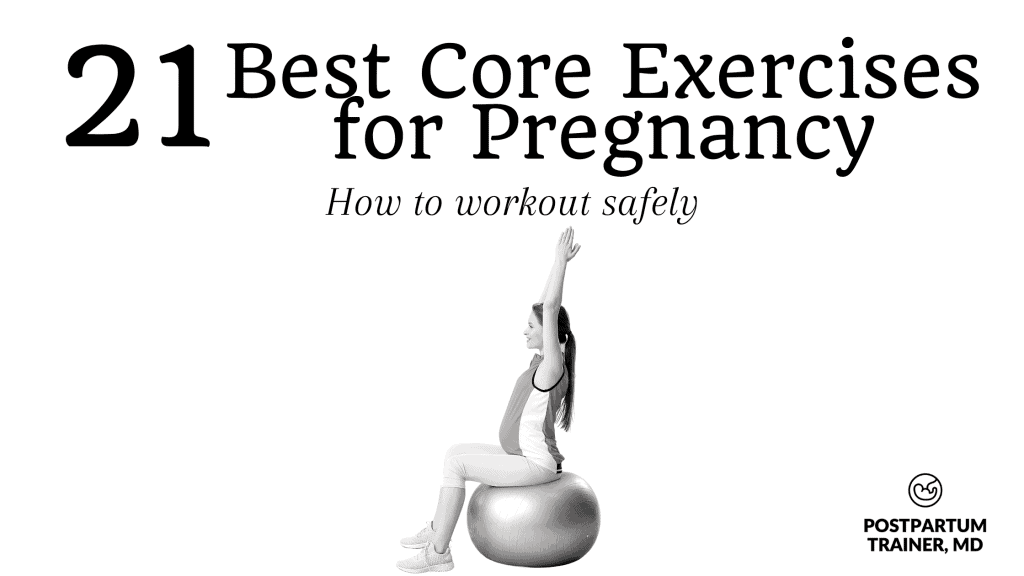
How do you work your core Safely when pregnant?
The core has three main functions.
- Spinal flexion,
- Spinal rotation, and
- Spinal stabilization
Spinal flexion is when you bring your torso closer to your legs. You can also perform lateral flexion.
Spinal rotation is exactly what it sounds like. You twist your upper body while your lower body remains fixed.
Lastly, spinal stabilization occurs when your limbs are moving while your pelvis and trunk remain stationary.
During pregnancy, the majority of your core training exercises should be spinal stabilization.
Stabilization exercises provide 3 main advantages:
- they limit the pressure on your abdomen,
- they can be done from both a standing and seated position,
- and they potentially improve your posture and spinal health.
Let’s go over the best ones below.
21 Best Core Exercises For Pregnancy
Alright, so let’s get right to the exercises.
As always, speak to your doctor before doing any type of exercise during pregnancy.
Secondly, make sure to listen to your body. Never do any exercise that feels funny or causes pain/discomfort.
Okay, are you ready?
Seated Lean Backs
This seated lean back is a lot harder than it looks. It is basically the top half of a sit-up but done in reverse. This movement can be done in all three trimesters.
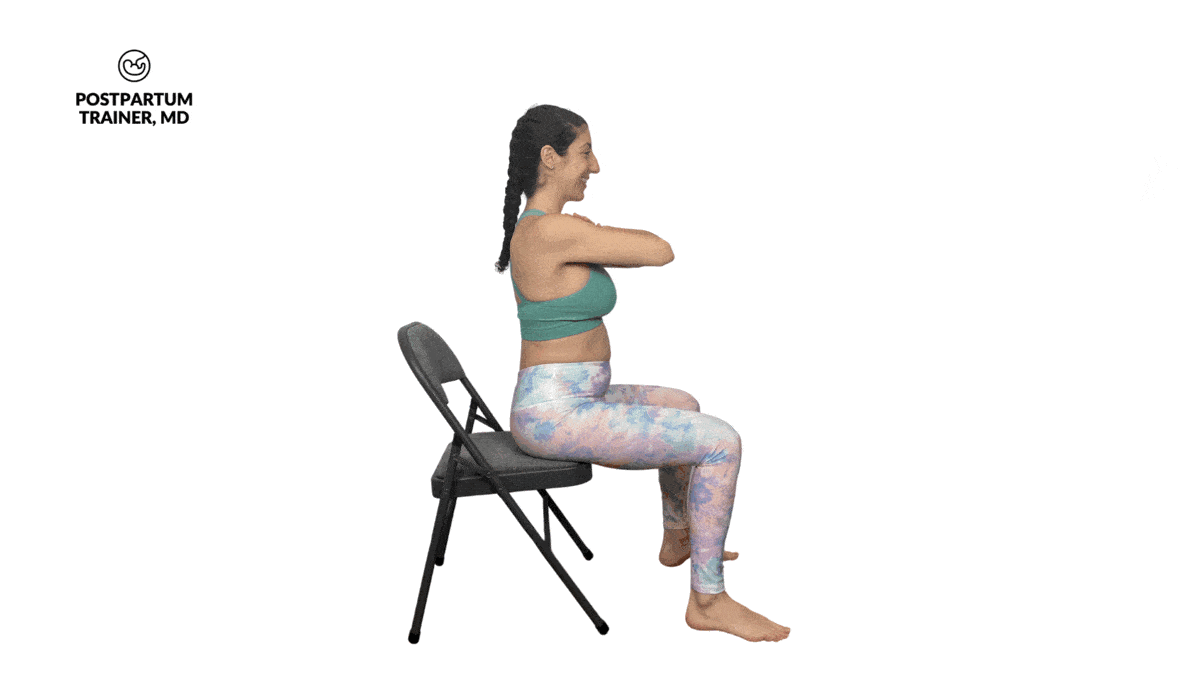
- Place a chair against a wall, and sit on the edge of the chair with your spine tall.
- Next, cross your arms above your chest.
- With your feet flat on the floor, begin leaning your upper back toward the backrest without changing your spinal alignment.
- Do this movement slowly, and you will feel your core muscles working hard to resist gravity.
- Once your upper back touches the rest, you can reset back to the starting position.
- Repeat for 8-10 repetitions.
Seated Marching Twist
The next exercise is also done in a seated position and will strengthen your lower abs, hip flexors, and oblique muscles. This movement can be done in the first and second trimesters.
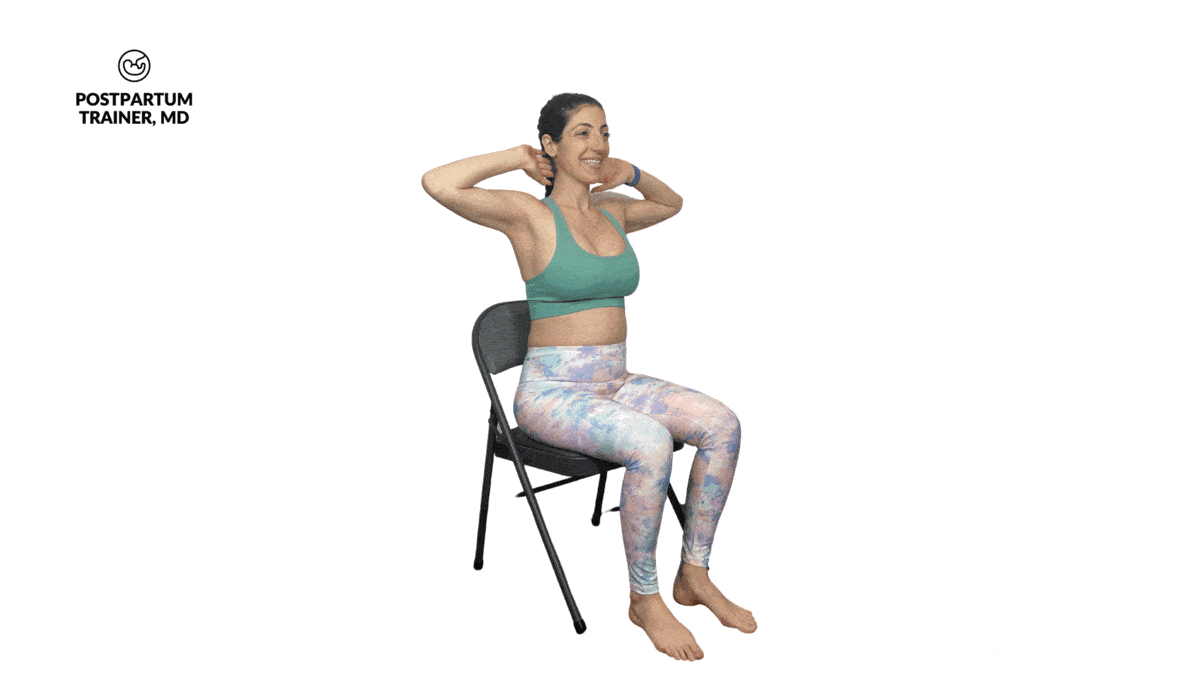
- Sit up tall on the edge of a seat with your hands behind your head.
- From here, lift up one knee as high as you can while keeping your core engaged.
- Next, rotate your upper body and bring your opposite elbow toward the knee you lifted.
- Hold this position for 3 seconds, and repeat on the opposite side.
- Repeat for 6-8 repetitions per side.
Diaphragmatic Breathing
Diaphragmatic breathing is one of the most fundamental core exercises that teaches you how to take a deep breath with your diaphragm muscle. This is one of the best ways to learn how to activate your transverse abdominals (the deep abdominal muscles)
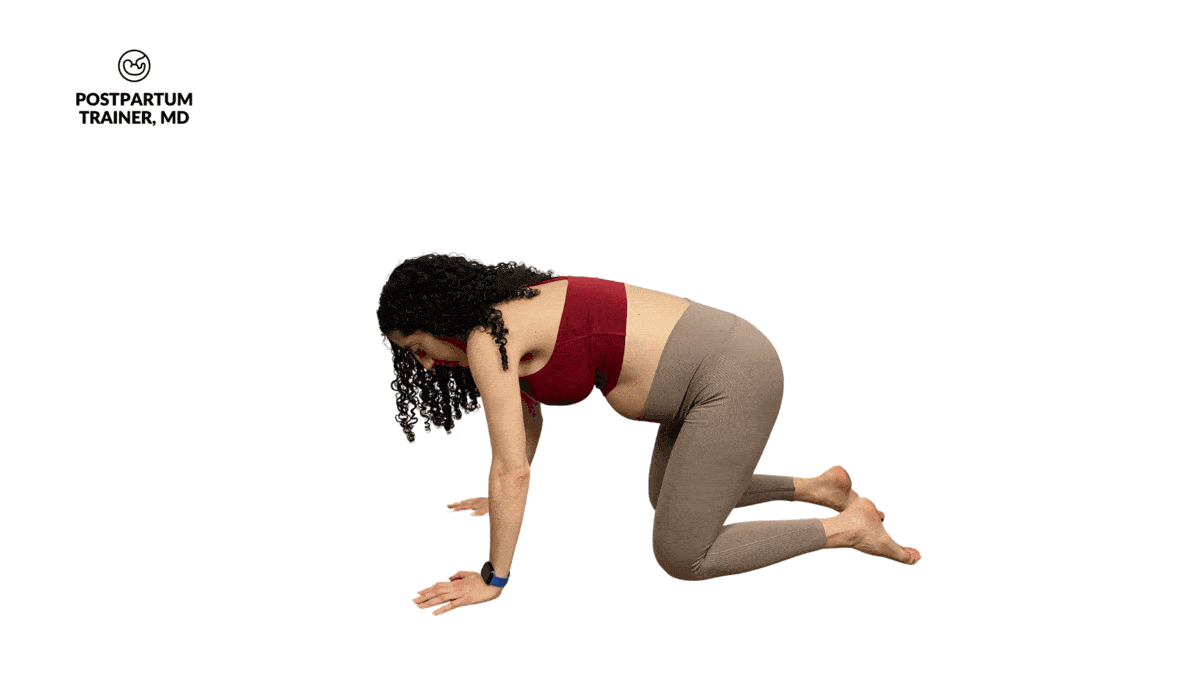
- From a seated position, with your spine tall, place your hands on your belly.
- From here, inhale as much as you can.
- Focus on expanding your abdomen laterally and brining your belly button outward.
- Do not shrug your shoulders.
- Once you reach maximum inhalation, hold your breath for a 3 count.
- Next, slowly exhale through your mouth by compressing your abs. Do this for at least 5 seconds)
- Exhale as much as you can while visualizing your abdominal muscles creating a corset around your uterus.
- Repeat for 5-8 repetitions.
Standing Pelvic Tilts
The pelvic tilt is a fundamental exercise that teaches you how to engage your core to maintain a neutral spine. You do this by tilting your pelvis posteriorly.
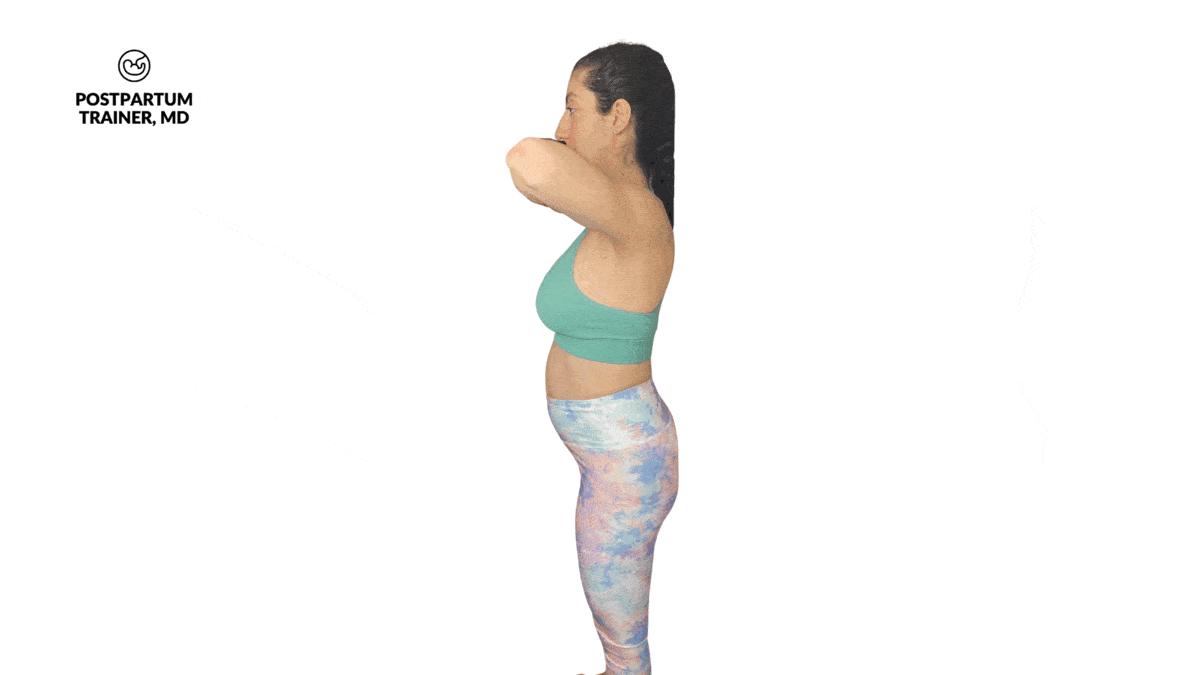
- Stand up against a wall with your head, upper back, and butt flat against a wall, with your feet about 6 inches away.
- There should be a small gap between your low back and the wall.
- The goal of this exercise is to close that gap and placing your low back flat against the wall.
- To do this, you will need to tilt your pelvis while contracting your abs.
- Hold this position for 3 seconds and repeat for 8-12 repetitions.
Quadruped Pelvic Tilts (The Scared Cat)
The quadruped pelvic tilt is similar to the standing pelvic tilt, except you will do it from your hands and knees. This position is a scaled-back version of a plank or a push-up position.
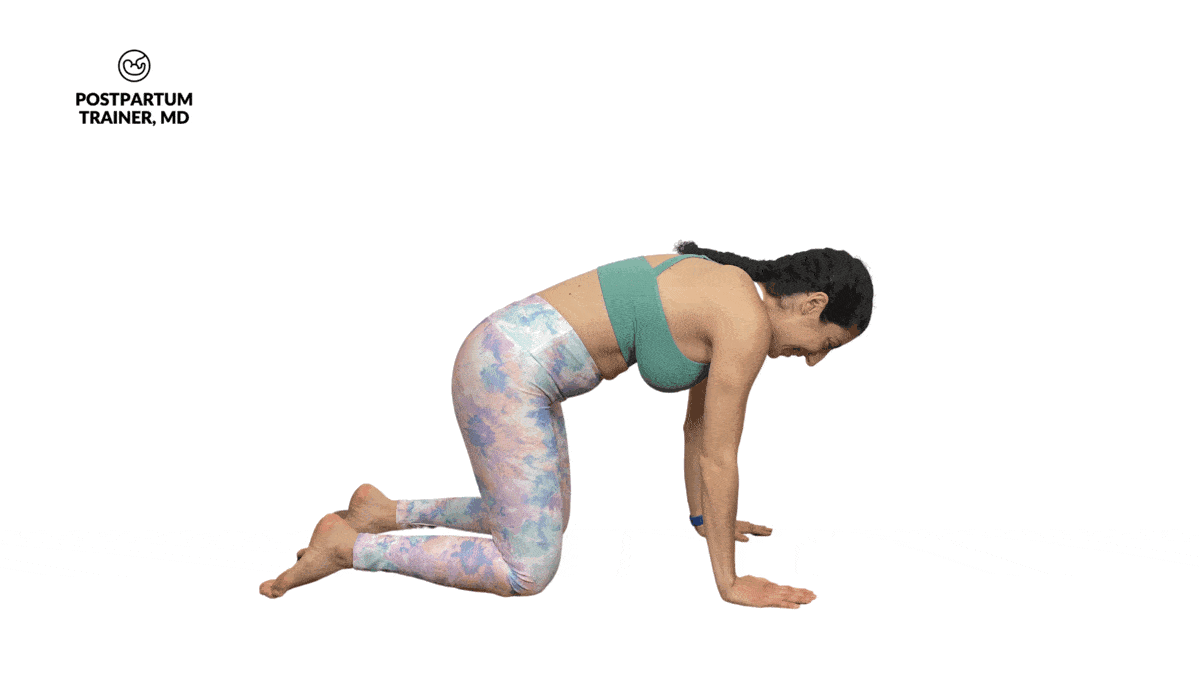
- Get into a quadruped position (on your hands and knees with your back flat).
- From here, all you have to do is perform a posterior tilt by contracting your ab muscles and rounding out your low back.
- You should feel a contraction in your midsection.
- Hold this position for 3 seconds and repeat for 8-12 repetitions.
Quadruped Shoulder Taps and Reach
The next exercise is done in the quadruped position and teaches you how to engage your core while moving your upper body.
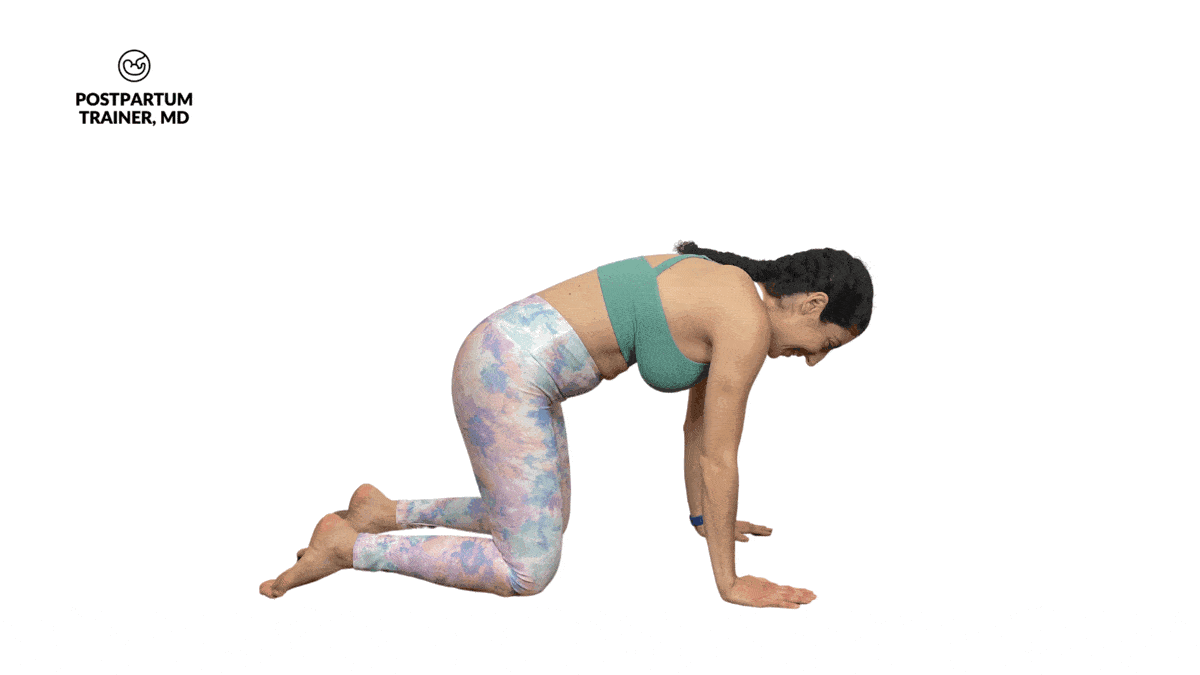
- Get into a quadruped position (on your hands and knees with your back flat).
- From here, posteriorly tilt your pelvis, and lift one hand off the floor to touch your opposite shoulder.
- Next, bring that arm straight out in front of you and reach as far forward as you can.
- Hold this position for 3 seconds, while making sure to keep your core engaged the entire time.
- Repeat with the opposite arm and do this for 6-8 repetitions per side.
Bear To Cow
The bear to cow increases the difficulty of the quadruped-based exercises. In this movement, you will alternate between a stable cow position and a more unstable bear position.
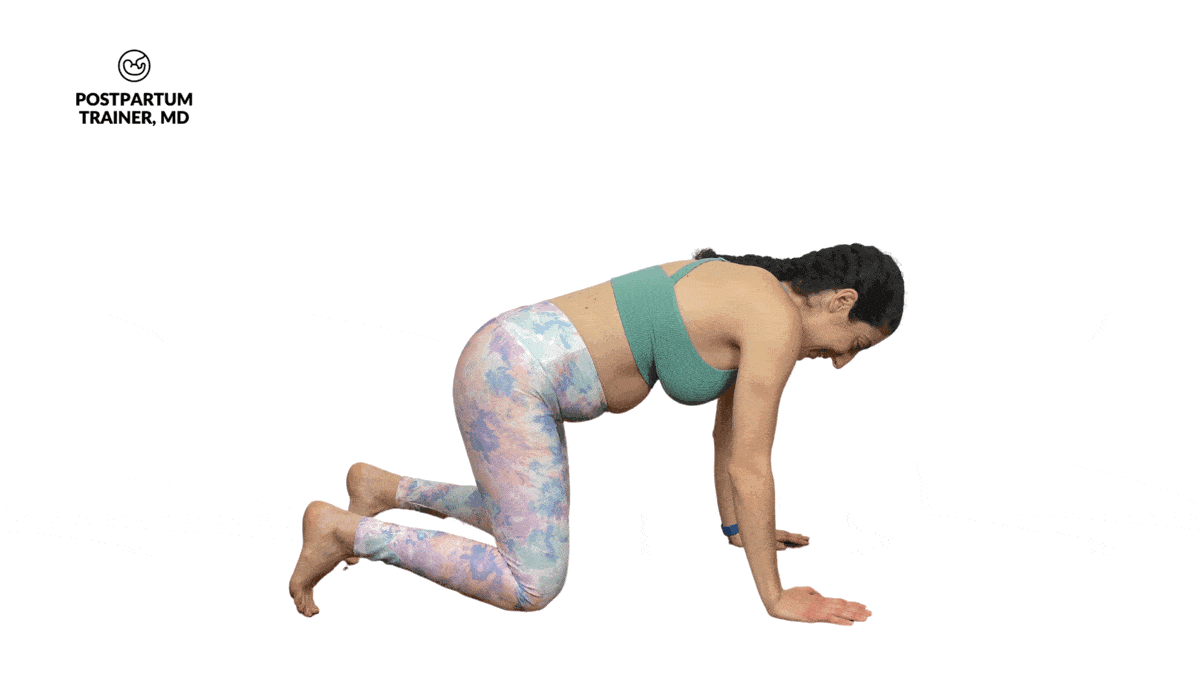
- Get into a quadruped position as you did in the previous exercise.
- Posteriorly tilt your pelvis and engage your core.
- From here, smoothly transition so that you are on your tippy-toes without changing your spinal alignment or moving your hands off the floor.
- Hold this position for 3 seconds, while making sure to keep your core engaged the entire time.
- Repeat for 8-12 repetitions.
Sitting Straight Leg Raise
The sitting straight leg raise is a challenging ab exercise variation that also improves your hamstring flexibility.
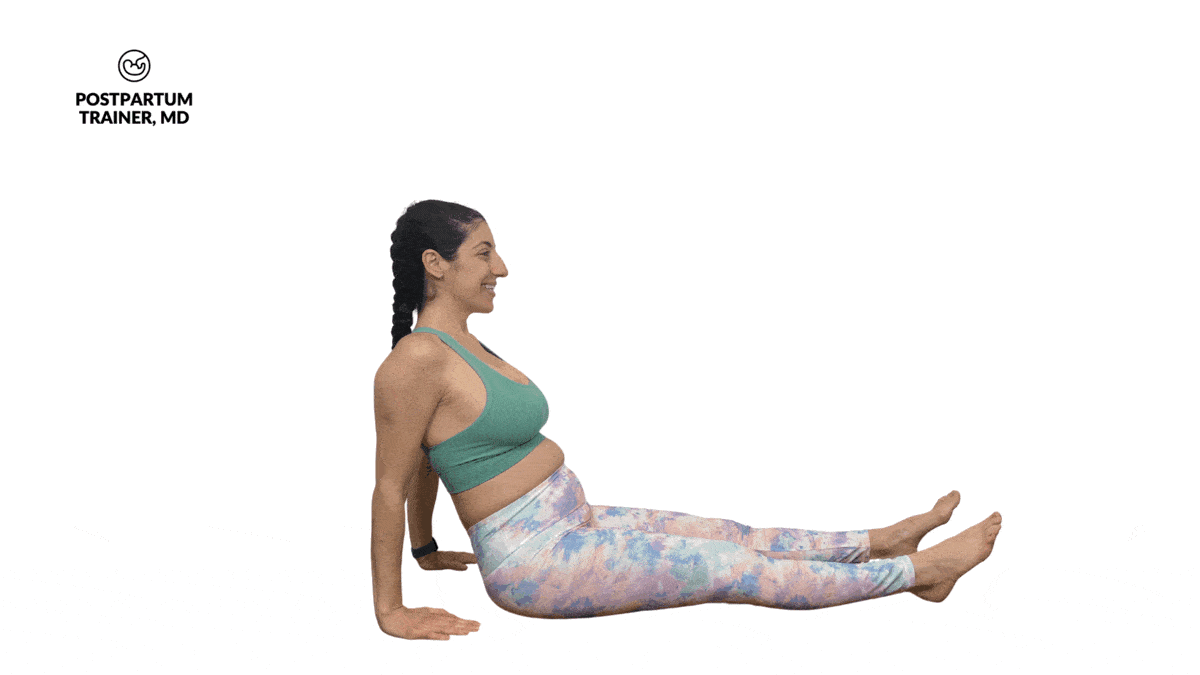
- Sit on the floor with your legs straight, toes pointing up toward the ceiling, and hands by your sides for support.
- While keeping your spine tall, lift one heel straight up toward the ceiling.
- Keep your knee straight, and your core engaged.
- Use your hands to help balance you.
- Hold this position for 3 seconds, and repeat on the opposite side.
- Repeat for 6-8 repetitions per side.
Modified Side Plank
Next up is the modified side plank. This classic exercise is the best way to train the obliques. You can always scale it to fit your skill level.
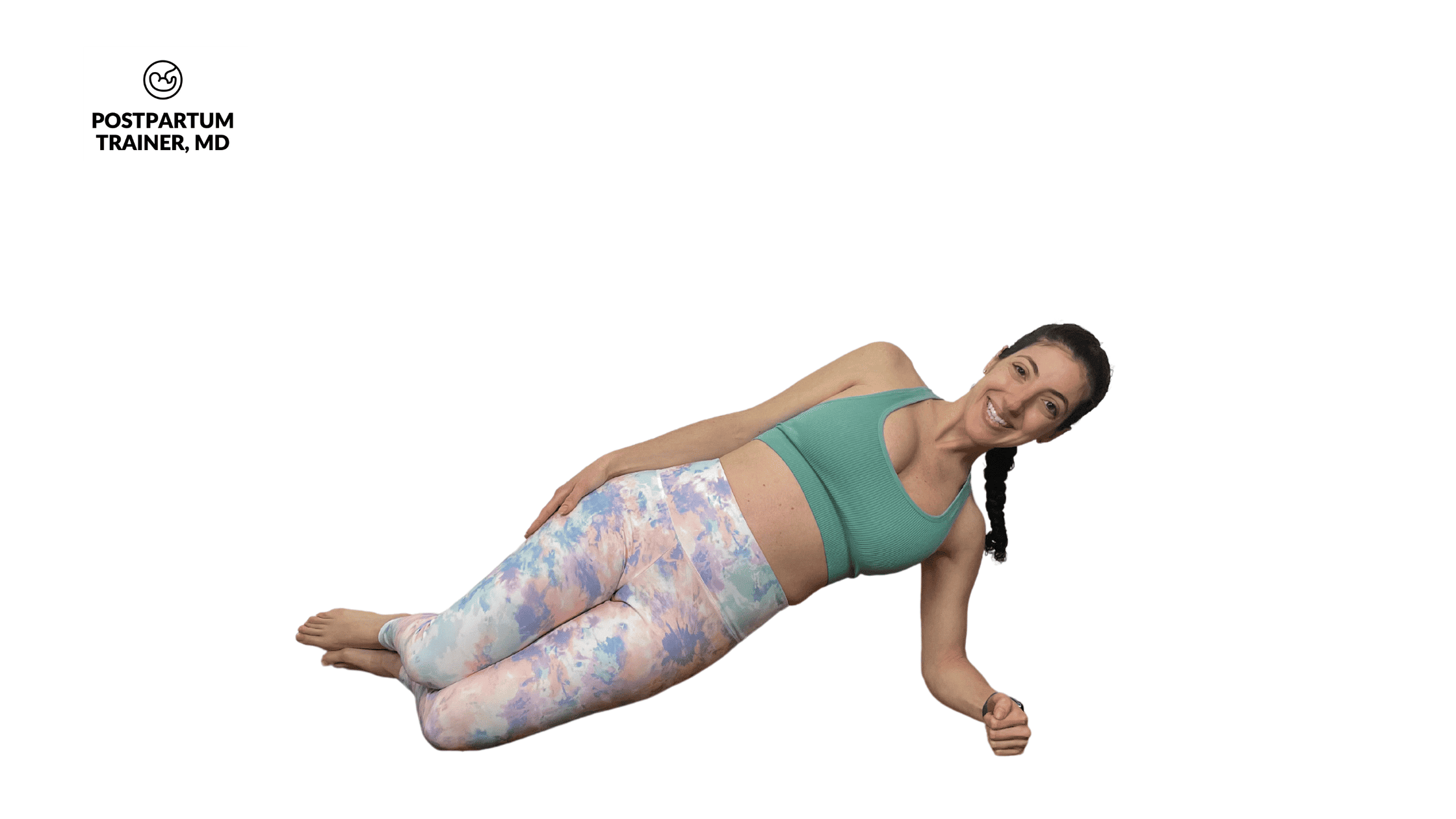
- Lie on your side, supporting yourself up on your elbow and forearm.
- Make sure that your back is straight, and bend your bottom knees while keeping it in contact with the floor.
- Next, extend your top leg and place that foot on the floor.
- Elevate your hips off the floor by squeezing your glutes and engaging your core.
- Keep your body straight and hold this position for 15 seconds and repeat on the other side.
Bird Dog
The bird dog is another fundamental exercise you should get comfortable doing. You might have seen this movement included in some of my other posts.
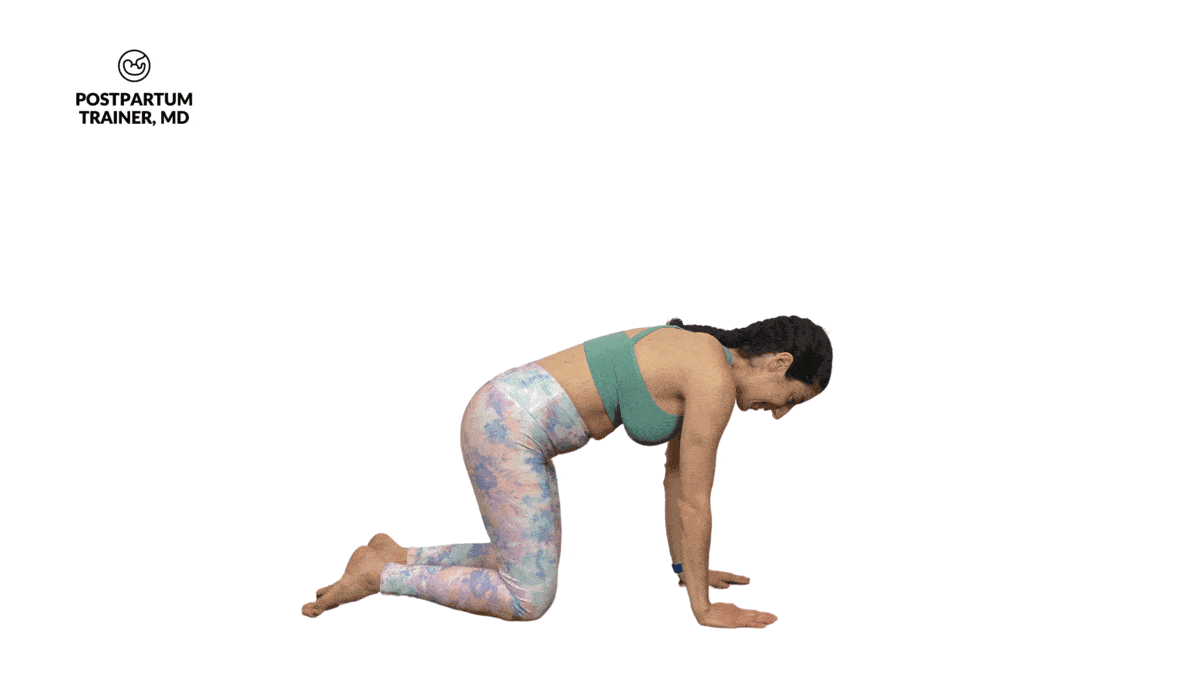
- Get into a quadruped position (on your hands and knees with your back flat).
- Next, posteriorly tilt your pelvis and engage your core.
- From here, lift one arm straight out in front of you while lifting the opposite leg straight back behind you.
- Squeeze your glutes, and try to keep your back straight the entire time.
- Hold this position for 3 seconds, and repeat on the opposite side.
- Repeat for 6-8 repetitions per side.
Farmer’s Carry
The farmer’s carry is one exercise I always come back to because it is safe, simple, and effective. This exercise strengthens the oblique stabilization component of your core.
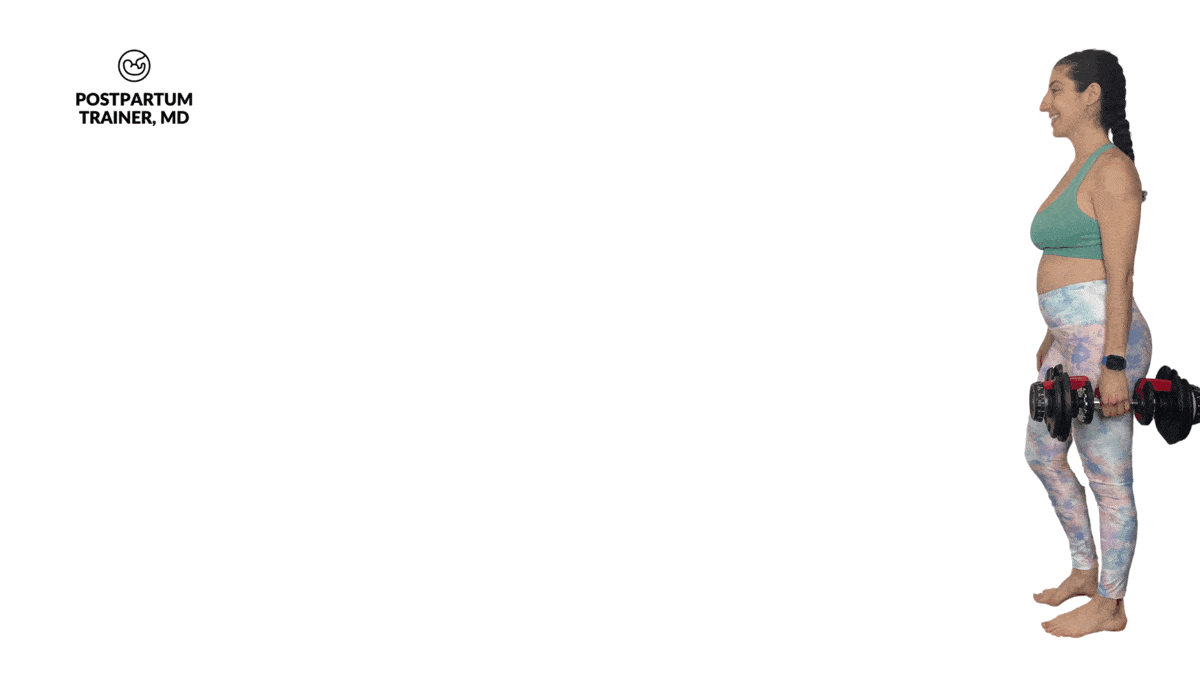
- To do this exercise, you will need a moderately heavy weight for it to work.
- To start, hold the weight with one hand, down by your side.
- Make sure to keep your spine as straight as possible and your core engaged.
- From here, all you have to do is take a few steps forward and keep walking.
- You want to make it look as if you aren’t holding a weight.
- Walk for 20 steps before switching sides.
In and Outs
The in and out exercise is also done from a seated position and strengthens your lower abs and hip flexors.
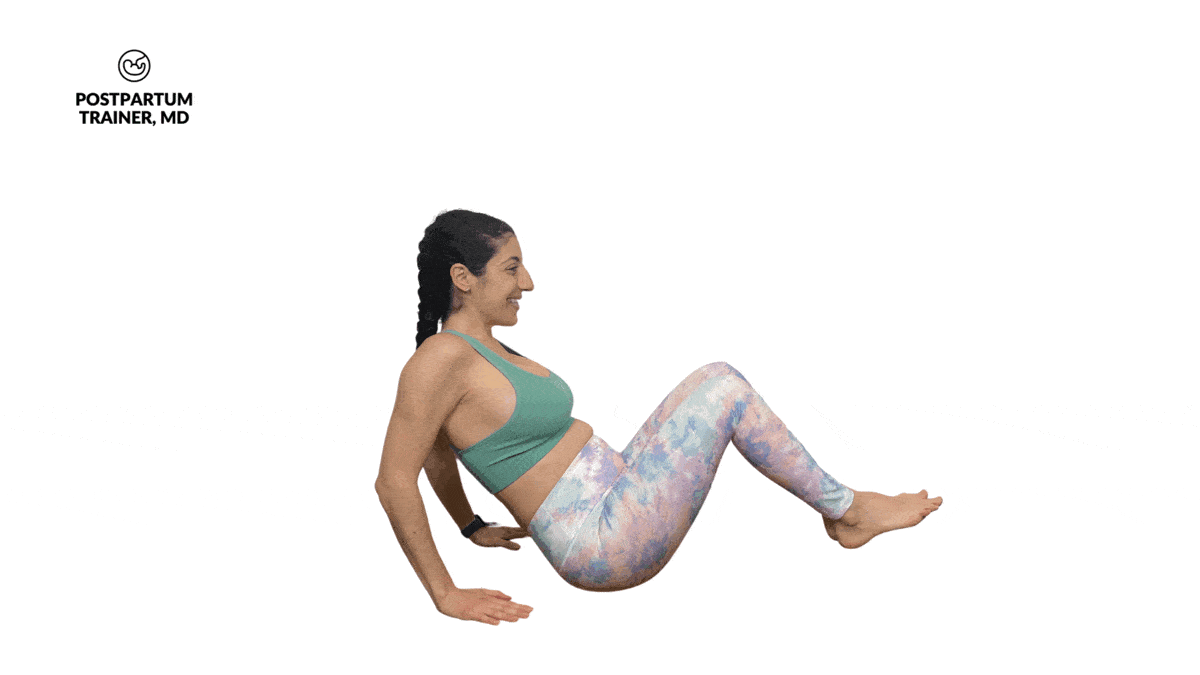
- Sit up tall on, near the edge of a seat.
- Hold on the sides of the chair for balance and support.
- From here, extend your legs out in front of you while keeping your knees and feet in contact.
- Then, bring your knees up toward your chest slowly and in a controlled manner.
- Keep your back straight, and slowly extend your legs back out.
- Repeat for 8-12 repetitions.
Wall Mountain Climbers
The wall mountain climber is a great core exercise that you can do while standing.
Here’s how it looks:
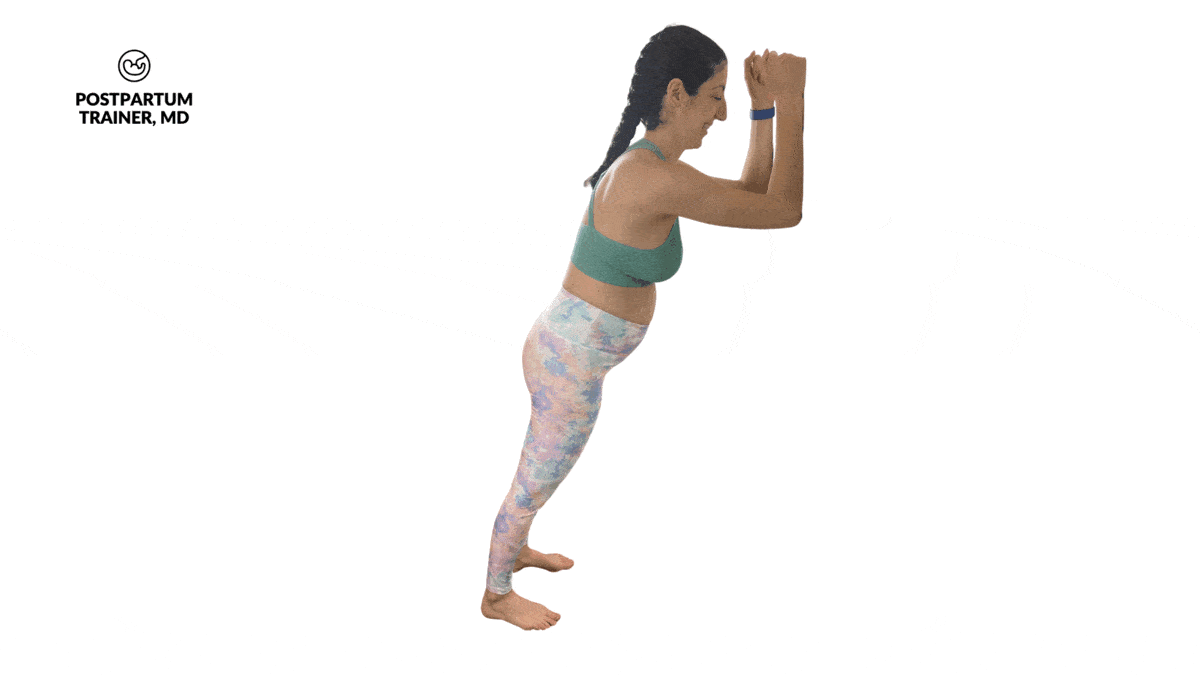
- Stand at least 12 inches away from a wall and place your outstretched hands against the wall.
- Now, brace your core and tilt your pelvis posteriorly.
- Bring one knee up towards your chest without letting your spinal alignment change.
- Do not round your back or rotate your hips.
- Slowly lower that leg and repeat on the opposite side.
Reverse Plank
The reverse plank is a challenging (but safe) exercise you can do to strengthen your core, glutes, and improve your shoulder flexibility.
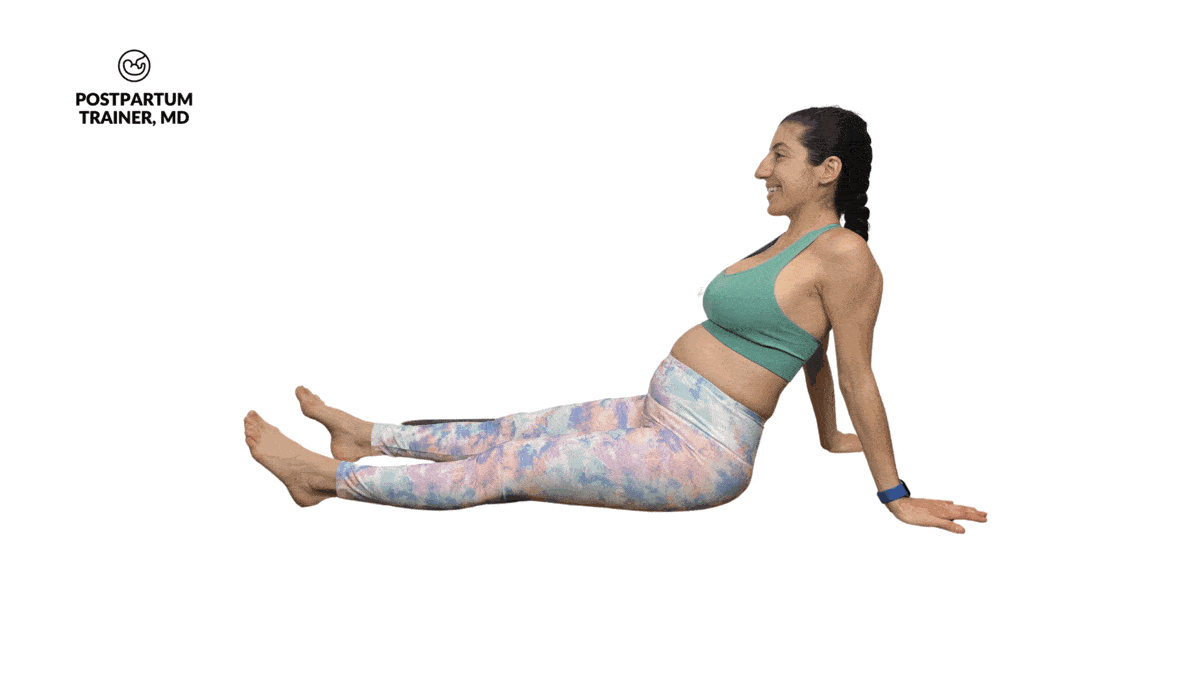
- Sit on the floor with your knees bent, feet flat on the floor, and shoulder-width apart.
- Place your hands back behind your body with your fingers pointing back.
- Next, squeeze your glutes to extend your hips.
- Hold this position for 15 seconds.
- To make this movement more challenging, you can straighten your legs.
Side Lying Hip Abductions
This next exercise will strengthen your oblique muscles while also improving the strength of your outer thighs.

- Lie on your side, supported on your elbow/forearm and your legs straight out on top of each other.
- Make sure that your back is straight and your hips are extended.
- From here, brace your core and lift your top leg straight up into the air and towards your head.
- Keep your knee straight and your toes pointing forward.
- To make this movement more challenging, you could even bring your top elbow toward your leg, doing a small side crunch for each repetition.
- Repeat for 8 repetitions before switching sides.
Half Kneeling Single Arm Press
Next up are the half-kneeling exercises. These movements increase the stability demands of any standing core exercise. The first is the single-arm press.
You will need some type of weight such as a dumbbell, kettlebell, or any household item you can hold sturdily.
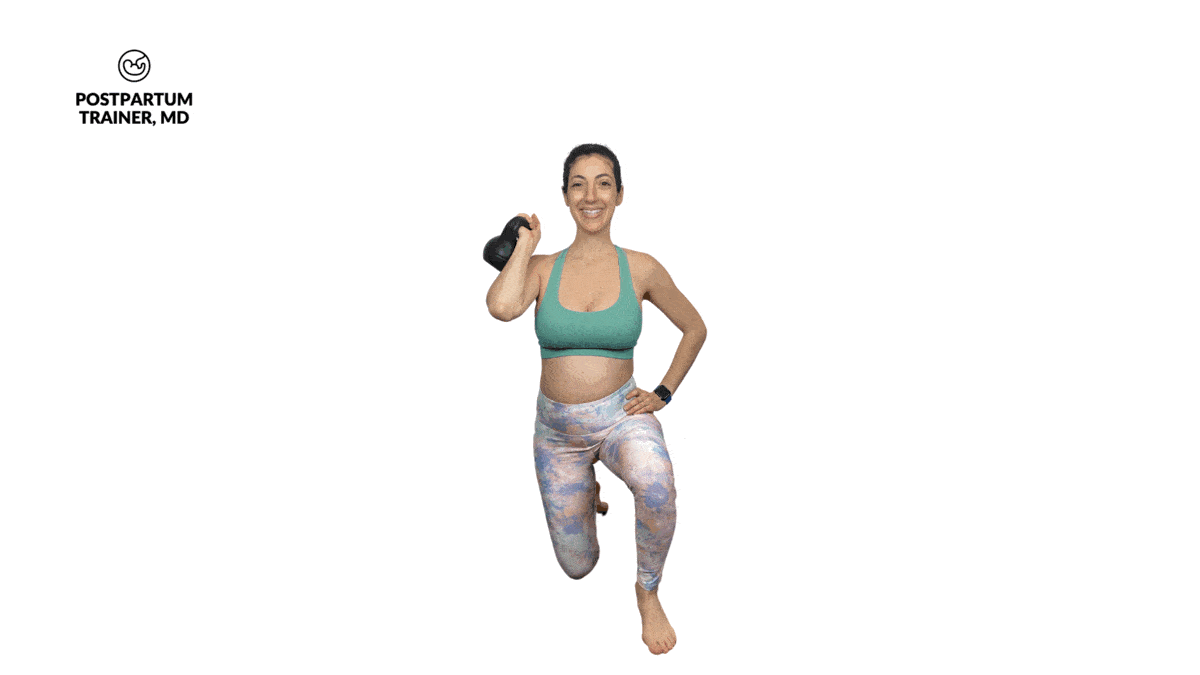
- Get into a half-kneeling position (one knee on the ground with your hip extended, and your other hip is flexed with your foot flat on the ground).
- Next, bring the weight up onto one shoulder with your palm facing forward.
- From here, contract your glutes and your abs, and press the weight directly overhead.
- Slowly bring it down while maintaining tension in your core.
- Repeat for 8-10 repetitions before switching sides.
Half Kneeling Chop
The half-kneeling chop is a great low impact way to strengthen all the muscles of the core while training your rotation strength.
You will need some type of weight to do this exercise.
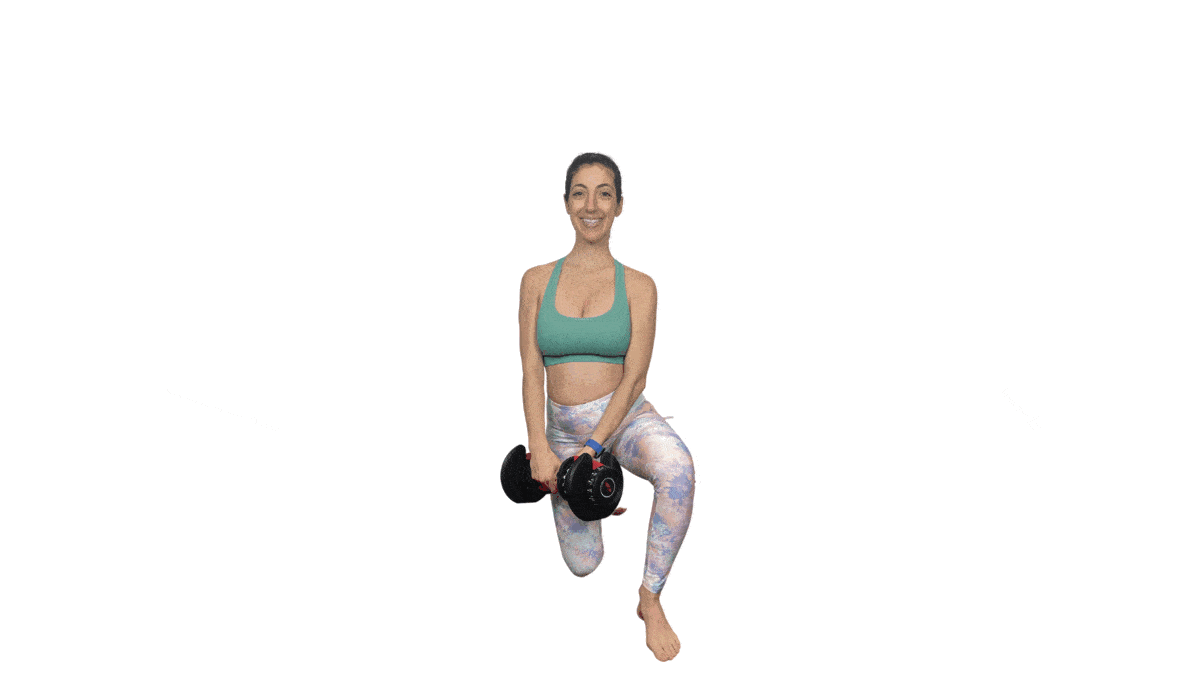
- Get into a half-kneeling position (one knee on the ground with your hip extended, and your other hip is flexed with your foot flat on the ground).
- Next, grab the weight with both hands and hold in front of the extended hip.
- From here, bring the dumbbell up and across towards your opposite shoulder slowly and smoothly.
- Bring the weight back down towards your hip in a smooth controlled fashion.
- Do not let your spinal position change at all throughout the exercise.
- Repeat for 6-8 repetitions before switching sides.
Incline Side Plank
The incline side plank allows you to achieve a full side plank position but from an easier position. You will be working across gravity, rather than directly against it.
To do this exercise, you will need a sturdy table or sofa to support your full weight.

- Assume a full side plank position, resting your forearm on the sofa.
- Make sure that your back is straight, your hips are level, and your legs are together and completely extended.
- Feel free to stagger your feet to further improve your balance.
- You can also do this exercise with your elbow straight, supporting yourself with just your hand.
- Hold this position for 15 seconds and repeat on the other side.
Incline Plank
The incline plank is just like the incline side plank. It is a scaled-back version of an already amazing exercise.
You will need a sturdy table or a chair to do this simple exercise.
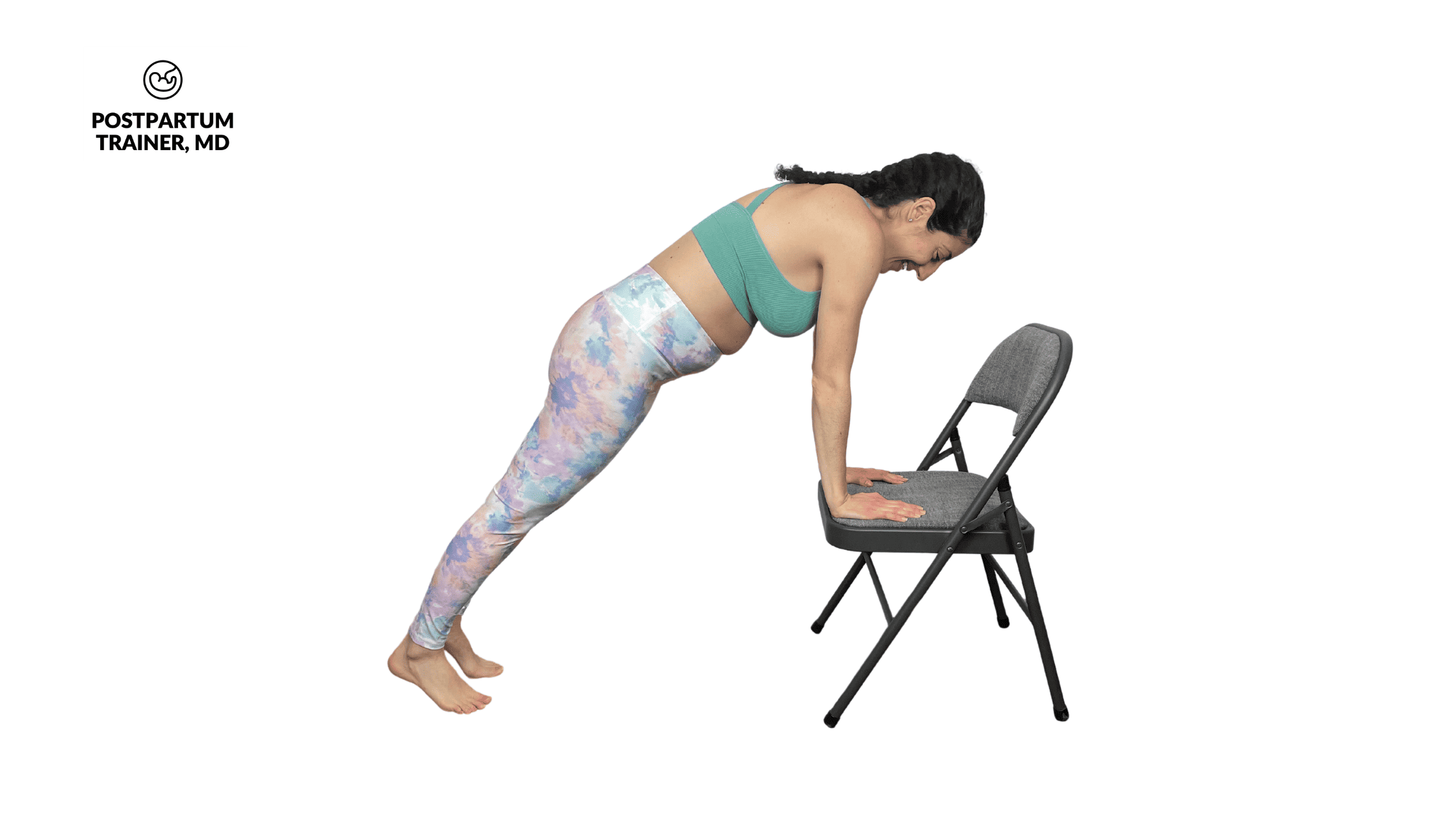
- Place your hands (or forearms) on the chair and extend your legs straight back behind you.
- From here, make sure to contract your glutes and engage your core muscles.
- Also, do your best to maintain a posterior pelvic tilt.
- Hold this position for 20 seconds.
Pallof Press
The pallof press is a great movement for improving the stability of your oblique muscles and trains the anti-rotation movement pattern. To do it, you will need a resistance band.
If you don’t already have some- I highly recommend that you get yourself a set.
Here are the bands I recommend from Amazon.
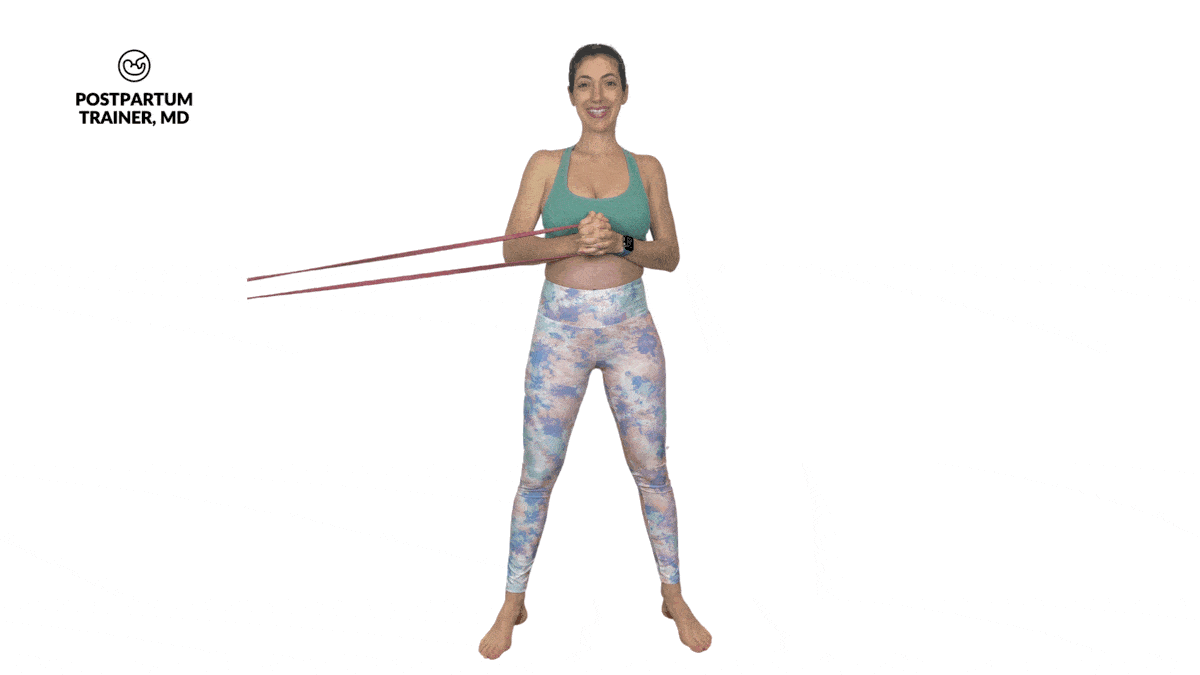
- Tie one end of your resistance band against a sturdy pole or horizontal beam.
- Next, bring up the other side of the band and hold it up by your chest.
- Step away from the pole to place the band on tension.
- Next, turn 90 degrees so that you are facing away from the pole/beam.
- From here, press the band directly out in front of you.
- The band will try to rotate your upper body. Do not allow this to happen.
- Hold this position for 3 seconds and slowly bring the band back toward your chest.
- Repeat for 8-12 repetitions per set.
Half Kneeling Halo
This is the last half-kneeling exercise we are including. This exercise will strengthen your shoulders while improving your overall core stability.
You will need some type of weight to do this exercise.
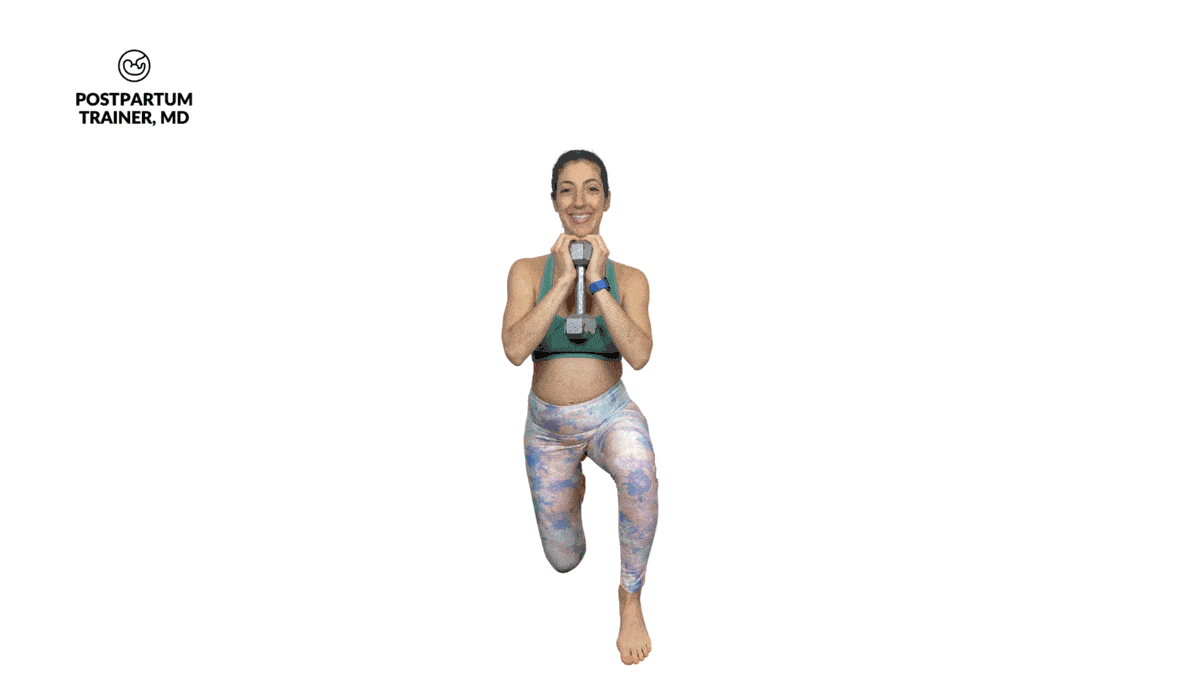
- Get into a half-kneeling position (one knee on the ground with your hip extended, and your other hip is flexed with your foot flat on the ground).
- Next, grab the weight and hold it up at the level of your chin.
- From here, bring the dumbbell up and around your head as if you were drawing a halo.
- Make sure to do this movement slowly and in a controlled manner.
- Keep your core engaged the entire time.
- Repeat for 8-10 repetitions before switching the direction.
Alright, so those are 21 unique and safe core exercises you can do during pregnancy.
Next, let’s go over some workouts you can do in each trimester.
The Prenatal Core Guide
Now let’s go over three core workouts that you can do throughout pregnancy, one for each trimester!
First Trimester Core Workout
In the first trimester, it is okay to do exercises where you are lying on your back.
Here are some examples:
| Exercise | Sets | Reps |
|---|---|---|
| Bear to Cow | 3 | 12 |
| Glute Bridge | 3 | 10 |
| In and Out | 3 | 10 |
| Seated Straight Leg Raise | 3 | 8 on each side |
Check out this complete 1st-trimester core workout that has a 10-minute follow-along video.
Second Trimester Core Workout
The second trimester begins at 14 weeks of gestation and ends after 26 weeks of gestation.
After 20 weeks, your growing belly will be big enough to limit some of the activities you can do. Specifically, you shouldn’t do any exercises where you are lying on your back for long periods of time.
Here is an example of a simple core workout you can do.
| Exercise | Sets | Reps |
|---|---|---|
| Seated Marching Twists | 3 | 8 reps on each side |
| Incline Planks | 3 | 20 seconds |
| Half Kneeling Single Arm Press | 3 | 8 reps on each side |
| Diaphragmatic Breathing | 3 | 10 |
Third Trimester Core Workout
Lastly, let’s go over a simple core workout you can do safely in the third trimester of pregnancy.
| Exercise | Sets | Reps |
|---|---|---|
| Birddogs | 3 | 8 reps on each side |
| Wall Mountain Climbers | 3 | 12 |
| Pallof Press | 3 | 8 reps on each side |
| Farmer’s Carry | 3 | 20 steps on each side |
Obviously, you can mix and match different ab exercises in any of these pregnancy workouts. The most important thing is that you have clearance from your doctor before doing any type of workout program in pregnancy and that you can do these movements safely.
Other Related Questions
Are abdominal exercises safe during early pregnancy?
It is perfectly safe to train your core muscles during pregnancy if you:
- have a healthy pregnancy with no contraindication to exercise,
- have obtained clearance from your healthcare provider, and
- you are motivated to develop a strong core.
It all starts with knowing the proper way to strengthen your abs.
What happens to your abs during pregnancy?
All of your ab muscles and connective tissue get stretched during pregnancy. This is because your rectus abdominis (the six-pack muscle) sits right on top of the uterus.
As the uterus grows, your abdominal wall is stretched to accommodate the growing baby.
Unfortunately, this stretching can lead to a condition known as diastasis recti, which can occur in about 60% of women.
Here’s how to tell if you have diastasis recti, and what to do about it.
What ab exercises should you avoid when pregnant?
In general, you must avoid any ab exercise that has you lying flat on your back, especially if you are in the second or third trimester.
Lying on your back in the second and third trimester for prolonged periods of time increases the risk of compressing your vena cava. This is the blood vessel that returns blood back to your heart.
You should also avoid any other exercise that places a high amount of stress on your abdomen such as crunches.
You might also hear some experts recommend that you avoid push-ups and planks.
In general, I think these exercises are potentially safe if you perform them using scaled-back variations as shown above.
Check out a detailed list of the Exercises You Should Avoid in Pregnancy here.
Can you do sit-ups while pregnant?
You should not do sit-ups while pregnant. This exercise will place too much pressure on your abdomen.
What are the best substitutes for sit-ups while pregnant?
The best sit-up substitutes during pregnancy are the in and outs and the mountain climber. Here is what they look like:

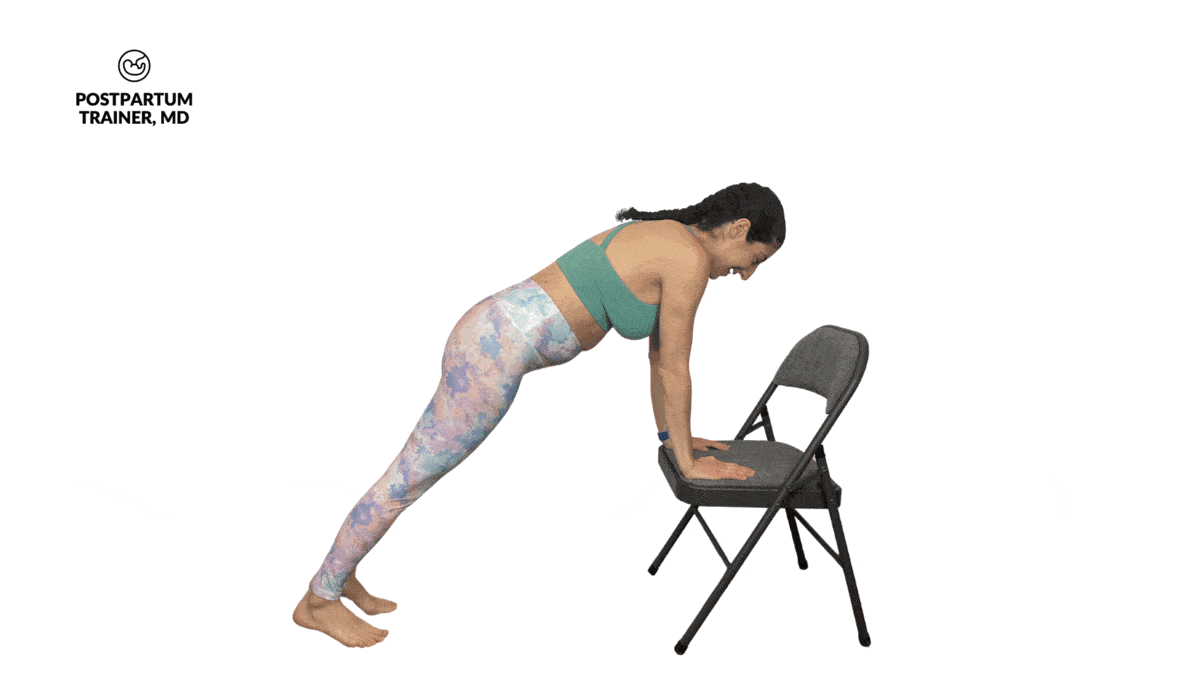
Can you do planks while pregnant?
It depends on your prior exercise experience. If you are a beginner (and have a healthy pregnancy), it is safe to do easier/scaled-back plank variations that place less stress on your core muscles.
This includes wall planks or incline planks.
I actually have a list of 20 different planks you could perform while pregnant depending on your trimester.
The most important thing is to always listen to your body and speak with a healthcare provider if you are ever unsure of anything.
When should you stop ab exercises during pregnancy?
You should stop performing flexion based-ab exercises once you are in the late first trimester to the early second trimester. However, you can perform stabilization-based ab exercises throughout your entire pregnancy if you do not have any contraindications to exercise.
Final Words On The Benefits of a Strong Abdominal Muscles In Pregnancy
Improving your core strength during pregnancy has many benefits including:
- improved posture
- decreased likelihood of lower back pain
- higher likelihood of an easier postpartum recovery
- potential decrease in the risk of diastasis recti
- increased activation of your pelvic floor muscles
So be sure to ask your doctor today if you can start doing some of these exercises!
Now I want to hear from you.
Have you started to train your ab muscles yet?
What has prevented you from exercising in pregnancy?
Comment below and let me know!
Related Posts On Pregnancy Workouts
- Pregnancy Love Handles [What To Do About Them]
- 18 Safe Transverse Abdominis Exercises You Can Do During Pregnancy
- 7 Exercises For SPD During Pregnancy [To Help You Get Relief]
Get Four Free Workouts To Help Strengthen Your Pelvic Floor & Heal Your Mommy Tummy!

Brittany Robles, MD, MPH, CPT
Brittany Robles is a full-time OBGYN physician, a NASM certified trainer, and a prenatal and postnatal fitness specialist. She holds a Master of Public Health degree in maternal health with a special interest in exercise and nutrition. She is also the co-author of The White Coat Trainer. Learn more about her here.
Sharing is Caring – Send This To A Mom In Need!
